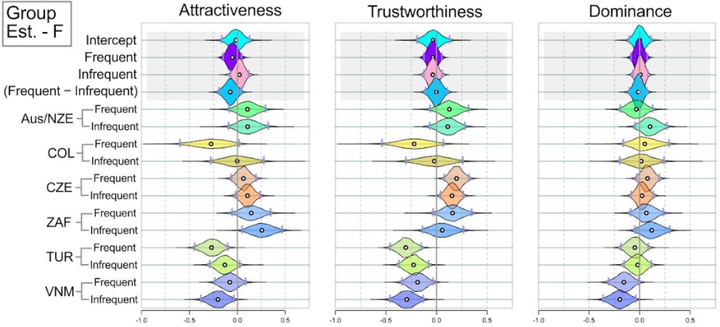Social media use does not change cross‑cultural consensus in first impressions

Abstract
Research focusing on first impression formation based on facial stimuli lacks a conclusion on whether there is a cross-cultural agreement and how deeply it has proliferated across distant populations. Social media may play an important role in the level of cross-cultural agreement as they provide us with overwhelming numbers of visual stimuli, including faces. Moreover, certain facial cues may be utilised more congruently by their users. We asked participants from six distant, ethnically variable countries from five continents to rate facial attractiveness, trustworthiness and dominance of a single ethnically invariant facial sample (N=195, 106 women, M_Age=23.23), also accounting for their social media use intensity. We expected the agreement between cultures to be better for participants who report higher frequency and intensity of social media use. Instead, we observe substantial cross-cultural agreement, especially for attractiveness and trustworthiness, regardless of the social media use frequency. We also see substantial agreement in cue utilisation. In agreement with previous research, the distinctiveness of facial shape affects perceived attractiveness congruently across cultures. Despite the relatively small age range, age positively affects ascribed dominance. There was a tendency for samples of similar cultural backgrounds (WEIRD) to agree more.